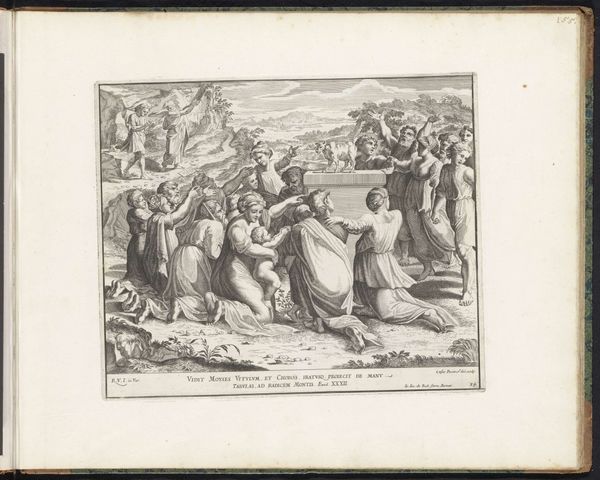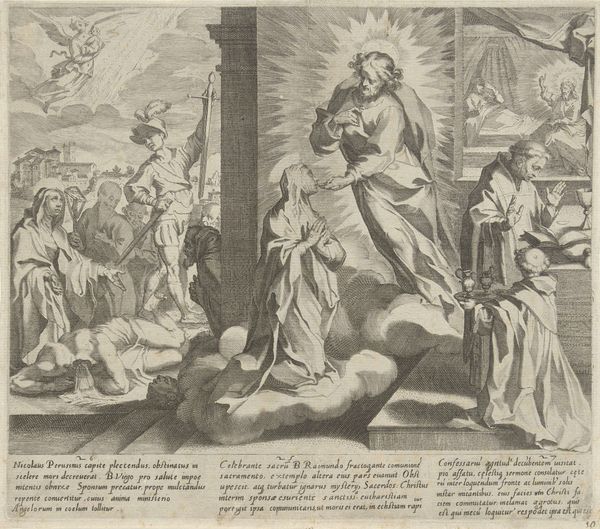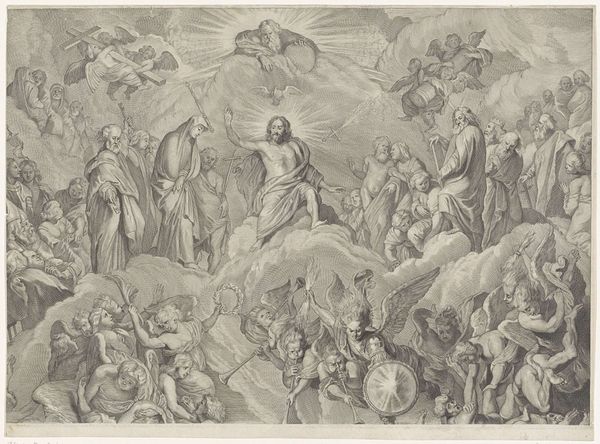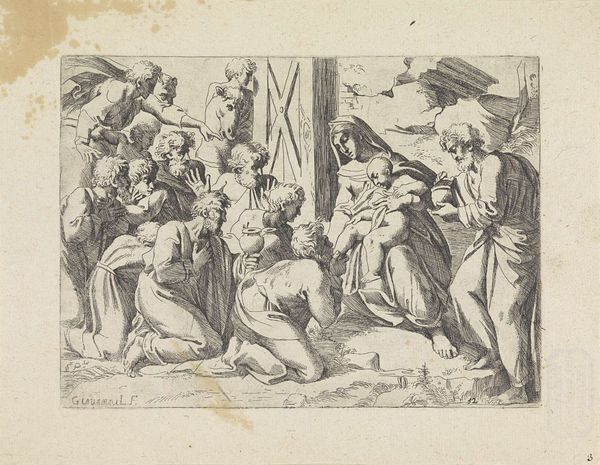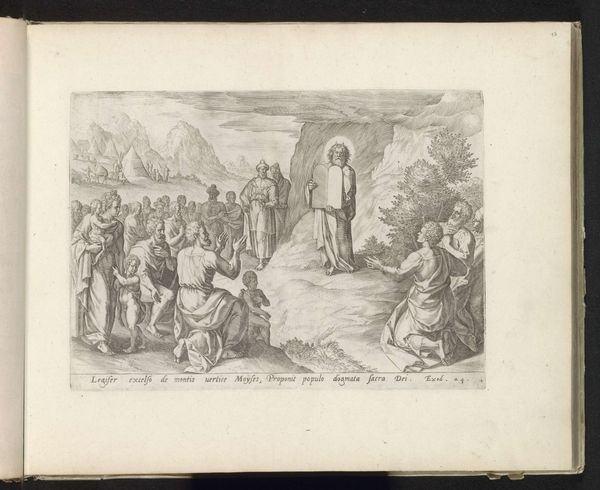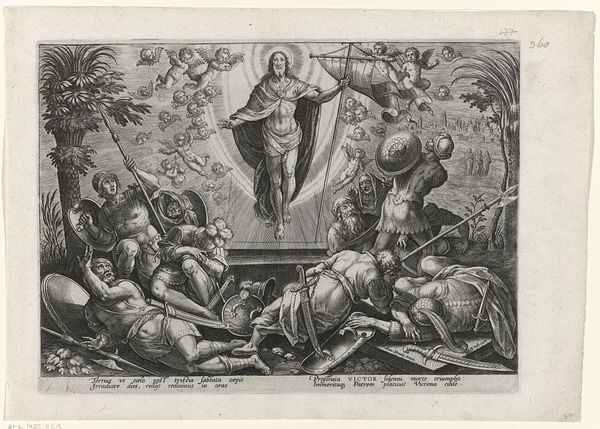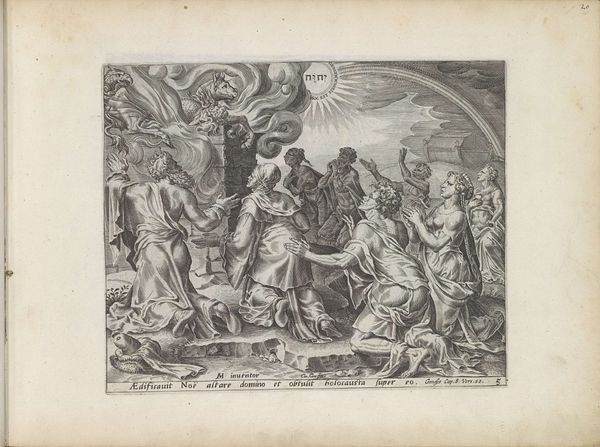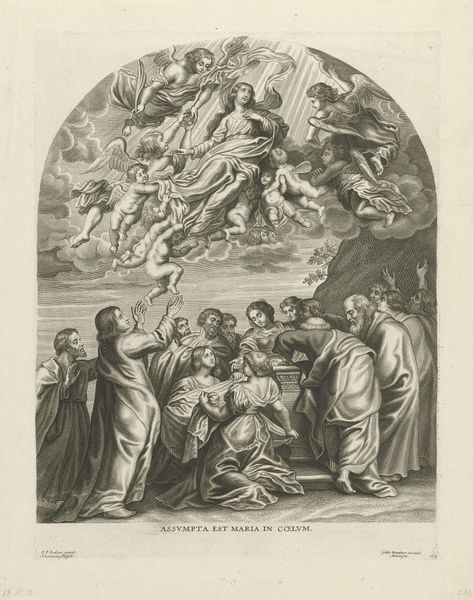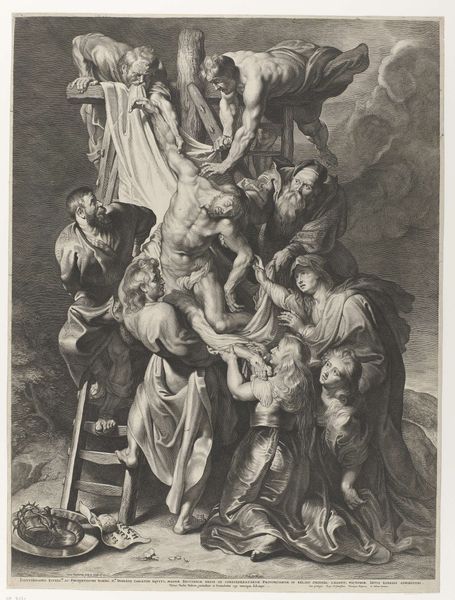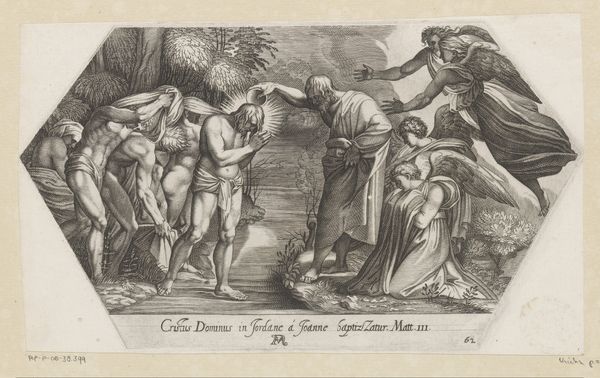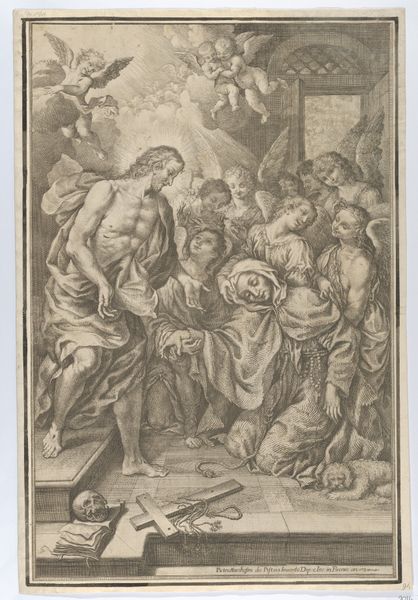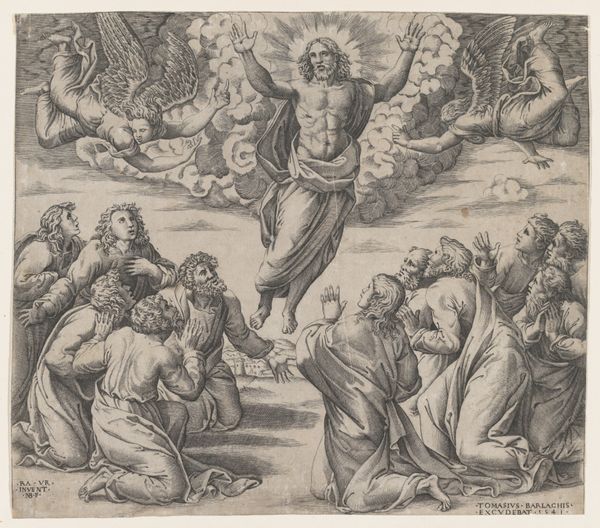
Dimensions: height 204 mm, width 285 mm
Copyright: Rijks Museum: Open Domain
Editor: So, this is *Transfiguratie*, an engraving from 1585, held at the Rijksmuseum. It seems to be by an anonymous artist. It’s incredibly detailed. All those tiny lines! I’m initially struck by how theatrical the composition is, everyone gesturing dramatically. How do you interpret the public role of an image like this at the time it was made? Curator: The theatricality is key. Consider the socio-political climate of 1585; religious images were potent tools. Engravings like this circulated widely, functioning as visual arguments during a period of intense religious conflict. How does the artist utilize the composition to emphasize a particular theological viewpoint, do you think? Editor: Well, Jesus is in the center and elevated above everyone, bathed in light. He looks the most important. Is the way religious figures are portrayed in art related to their position in the church at the time? Curator: Absolutely. The artist is using visual cues – light, positioning, gesture – to reinforce established hierarchies and theological doctrines. Notice how the figures below Jesus recoil in awe, emphasizing his divine power. How might this image have been received in different religious communities? Would a Protestant audience, for instance, view it the same way as a Catholic one? Editor: I hadn't thought of that. Perhaps Protestants might have been more critical of the theatricality and what they saw as idolatry? Curator: Precisely. This image participates in a larger debate about the role of images in religious life and the potential for their manipulation to convey specific ideological messages. We might also consider how the act of mass production of prints itself changes religious imagery and devotion. Now, thinking about how museums curate this kind of piece…what impact might context and display have on the contemporary viewers? Editor: I suppose the way it's framed and the information presented can really shape how people understand its original function and the messages it carried back then. It adds another layer of interpretation, beyond the strictly religious meaning. Curator: Indeed, context is crucial. Examining its history through a social and political lens reveals the enduring power of art to shape belief and reflect the complexities of human experience.
Comments
No comments
Be the first to comment and join the conversation on the ultimate creative platform.
